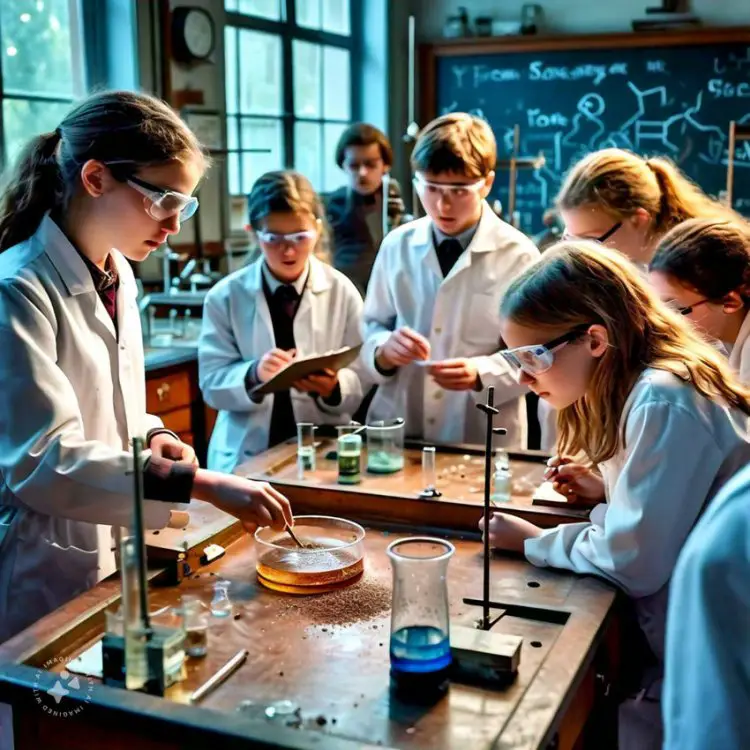Understanding the Properties and Uses of Metals and Non-Metals
Discover the properties, uses, and differences between metals and non-metals. This article covers the physical and chemical properties of metals, including their lustre, malleability, ductility, conductivity, and reactivity with oxygen, water, acids, and bases. Additionally, it explores the uses of metals in various industries, such as construction, transportation, and electronics. In contrast, non-metals are discussed, including their lack of lustre, brittleness, poor conductivity, and reactivity with oxygen, water, acids, and bases. The uses of non-metals, such as oxygen, nitrogen, carbon, sulfur, and phosphorus, are also examined. A comparison of the properties of metals and non-metals is provided, highlighting their differences in lustre, malleability, ductility, conductivity, state at room temperature, density, strength, sonority, and reactivity with various substances. This guide provides a thorough understanding of metals and non-metals, essential for various scientific and pr

Metals - Properties of Metals
-
Physical Properties:
- Lustre: Metals have a shiny surface when freshly cut or polished.
- Malleability: Metals can be hammered or rolled into thin sheets without breaking. Examples: Gold, silver.
- Ductility: Metals can be drawn into thin wires. Examples: Copper, aluminum.
- Conductivity: Metals are good conductors of heat and electricity. Examples: Copper, silver.
- Density and Strength: Most metals have high density and are strong.
- Sonorous: Metals produce a ringing sound when struck.
- Hardness: Most metals are hard except for a few like sodium and potassium.
-
Chemical Properties:
- Reaction with Oxygen: Metals react with oxygen to form metal oxides. For example:
- Reaction with Water: Metals react with water to form metal hydroxides and hydrogen gas. For example:
- Reaction with Acids: Metals react with acids to produce hydrogen gas. For example:
- Reaction with Bases: Some metals react with bases to produce hydrogen gas. For example:
- Displacement Reactions: Metals can displace less reactive metals from their compounds in aqueous solutions. For example:
- Reaction with Oxygen: Metals react with oxygen to form metal oxides. For example:
Uses of Metals
- Iron: Used in construction (steel), machinery, and automotive industry.
- Aluminum: Used in aircraft, kitchen utensils, and packaging.
- Copper: Used in electrical wiring, plumbing, and electronics.
- Gold and Silver: Used in jewelry and electronics.
- Zinc: Used for galvanizing iron to prevent rusting and in making alloys like brass.
Non-Metals - Properties of Non-Metals
-
Physical Properties:
- Lack of Lustre: Non-metals do not have a shiny appearance. They are usually dull.
- Non-Malleable and Non-Ductile: Non-metals are brittle and break easily when hammered or stretched.
- Poor Conductors: Non-metals are poor conductors of heat and electricity. Examples: Sulfur, phosphorus.
- Low Density and Strength: Non-metals generally have lower density and are not strong.
- Non-Sonorous: Non-metals do not produce a ringing sound when struck.
- Varied States: Non-metals can be solid, liquid, or gas at room temperature. For example, carbon (solid), bromine (liquid), and oxygen (gas).
-
Chemical Properties:
- Reaction with Oxygen: Non-metals react with oxygen to form non-metal oxides, which are generally acidic in nature. For example:
- Reaction with Water: Non-metals do not react with water or produce hydrogen gas.
- Reaction with Acids: Non-metals do not react with acids.
- Reaction with Bases: Non-metals react with bases to form salts. For example:
- Displacement Reactions: Non-metals can displace less reactive non-metals from their compounds. For example:
- Reaction with Oxygen: Non-metals react with oxygen to form non-metal oxides, which are generally acidic in nature. For example:
Uses of Non-Metals
- Oxygen: Essential for respiration and combustion.
- Nitrogen: Used in fertilizers and as a preservative.
- Carbon: Used in making steel, pencils (graphite), and as a fuel (coal).
- Sulfur: Used in making sulfuric acid, rubber, and fungicides.
- Phosphorus: Used in fertilizers, detergents, and matches.
Comparison of Metals and Non-Metals
| Property | Metals | Non-Metals |
|---|---|---|
| Lustre | Shiny | Dull |
| Malleability | Malleable | Brittle |
| Ductility | Ductile | Non-ductile |
| Conductivity | Good conductors of heat and electricity | Poor conductors of heat and electricity |
| State at Room Temp | Mostly solid (except mercury) | Solids, liquids, and gases |
| Density | Generally high | Generally low |
| Strength | Strong | Weak |
| Sonority | Sonorous | Non-sonorous |
| Reaction with Oxygen | Forms basic or amphoteric oxides | Forms acidic or neutral oxides |
| Reaction with Water | Reacts to form hydroxides and hydrogen | Generally does not react |
| Reaction with Acids | Reacts to produce hydrogen gas | Does not react |
| Reaction with Bases | Some react to produce hydrogen gas | Reacts to form salts |
What's Your Reaction?





















